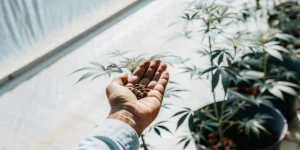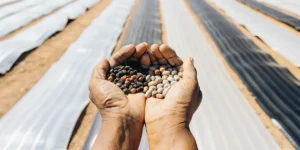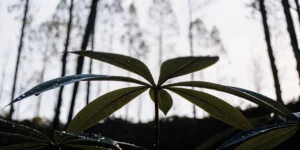Genetic Differences
Chromosomal Variations in Male Seeds
Male seeds carry one X and one Y chromosome in their genetic makeup. This pattern triggers development of male flowers. Growers notice male plants show stiffer stems and fewer resin glands. This XY trait often leads to rapid early growth. It also makes male plants efficient pollinators. Accurate knowledge of this chromosomal setup helps growers plan breeding. Genetic labs confirm chromosome pairs with simple tests. That insight boosts selection accuracy.
Male chromosomes sometimes carry genes for traits like height or resilience. When breeders cross male with female lines, they expose recessive genes. That process lets breeders introduce stronger pest resistance. It also fuels development of new hybrids. Growers monitor pollen production to avoid unwanted fertilization. Identifying male plants early helps prevent seed in buds. Labs use PCR methods to detect Y markers. Growers apply these results to refine breeding lines.
Chromosomal Variations in Female Seeds
Female seeds hold two X chromosomes. That double X pattern leads to flowers rich in resin. Growers prize female plants for bud quality. This XX setup gives stable cannabinoid expression. It also reduces chance of hermaphroditism under stress. Well selected female genetics often yield predictable terpene profiles. Labs screen seeds to verify absence of Y markers. Growers trust those results when choosing seed lots.
Female plants develop pistils that capture pollen. That mechanism ensures seed production only when desired. Growers rely on that function to control breeding. XX chromosomes support larger calyx development, a trait found in classic strains like Panama Red FEM. This feature boosts flower density and resin output. Careful selection of female seeds secures consistent growth. Experienced cultivators value reliable XX lines for medical applications.
Impact on Plant Development
Male and female seedlings show distinct early traits. Female seedlings tend to develop broader foliage during the first two weeks. Male seedlings often shoot up tall, slender stems before leaf expansion. Growers tag seedlings based on stem thickness and leaf shape. That early sorting optimizes space and resource use. Leaf morphology gives clear clues during the second node stage. Proper identification reduces wasted effort on unwanted plants.
During flowering, female plants focus energy on bud formation. Male plants divert energy to produce viable pollen. This energy split changes greenhouse dynamics. Growers track flowering progress daily. They remove male plants once pollen forms. That practice prevents accidental fertilization. It also preserves resin content in female flowers. Proper timing of removal maximizes flower potency and yield.
Identification Techniques
Visual Seed Characteristics
Seed shape and color help spot potential gender before planting. Female seeds often display darker stripes and a smooth, glossy shell. Male seeds can appear lighter with a matte finish. Growers examine seed size too, since subtle differences emerge across strains. For example, Super Boof Fem seeds are known for their distinct appearance and consistent quality. Visual clues alone may not suffice for absolute accuracy. However, they offer a quick, cost-free initial screening.
Experienced cultivators also inspect the seed tip, where the embryo resides. Female seeds sometimes show a pronounced point. Male seeds may have a blunter end. Growers pair visual checks with feel tests, assessing hardness and texture. These combined observations improve pre-germination sorting. Even so, follow-up testing can confirm visual findings.
Germination Patterns
Seed gender can reveal itself during germination. Male seedlings often sprout faster than female counterparts. They exhibit slender cotyledons and rapid stem elongation under identical conditions. Growers note this trend when sprouting multiple seeds in controlled trays. That timing difference suggests initial sex identification, especially when working with classic feminized strains like Panama Red FEM.
Female sprouts may take an extra day to unfurl their first true leaves. These true leaves often display broader blades and more pronounced serration. Growers use gentle lighting changes to trigger leaf development. Monitoring sprout behavior under consistent light and humidity uncovers gender patterns. Still, this method remains probabilistic rather than foolproof.
Laboratory Testing Options
DNA testing offers precise gender determination before planting. Growers send seed samples to specialized labs for PCR analysis. That process detects Y-linked markers with high reliability. Results arrive within days, allowing cultivators to sort seed lots accurately. This scientific route reduces the risk of unwanted males among flowering plants, which is especially useful when working with premium genetics like the Sweet ZZ Auto strain, known for its consistency and quality yields.
In-house testing kits also exist for rapid checks. They use small tissue samples from sprouts to run quick assays. These kits trade some accuracy for convenience and cost savings. Growers balance lab fees against the value of their crop. Whichever route they choose, genetic testing yields far more certainty than visual or germination methods.
Cultivation Objectives
Selecting Seeds for Yield
When maximizing bud mass, growers often choose female seeds exclusively. Female plants devote energy to resinous calyx development. That focus delivers denser, larger flowers. Growers monitor nutrient levels and light cycles to enhance bud weight. Selecting proven high-yield XX strains boosts overall harvest volume.
Conversely, mixed seed lots can produce variable harvests. Male removal reduces canopy shading and fosters healthier female clusters. That strategy lifts average yield per square meter. Growers plan row spacing and light penetration based on predictable female growth patterns. Choosing Panama Red FEM helps streamline resource allocation during peak flowering, thanks to its consistent performance and stable genetics.
Breeding and Hybrid Projects
Breeders require male seeds to create new hybrids. They select males with desirable traits like aroma, vigor, or resin profile. Crossing those genetics with female lines produces F1 hybrids. This step mixes parent traits and reveals recessive characteristics. Careful selection of both male and female seeds shapes next-generation cultivars.
Hybrid projects also rely on test crosses. Breeders pollinate multiple female plants with a single male pollen batch. That process evaluates compatibility and progeny performance. Growers catalogue resulting seeds by phenotype and cannabinoid ratios. Structured breeding plans guide seed selection for advancing cultivar portfolios.
Maximizing Genetic Diversity
Maintaining a broad gene pool protects against pests, diseases, and climate shifts. Growers rotate male and female genetics from different regions each season. This approach reduces inbreeding depression and boosts plant resilience. Introducing fresh male lines injects novel alleles into established female stocks. That diversity safeguards long-term crop stability.
Seed banks play a vital part in diversity management. They preserve classic and heirloom genetics under controlled storage. Growers source rare male and female seeds to refresh breeding programs. That cycle of selection, crossing, and conservation sustains innovation. Ultimately, genetic variety supports both commercial and medicinal cultivation goals.
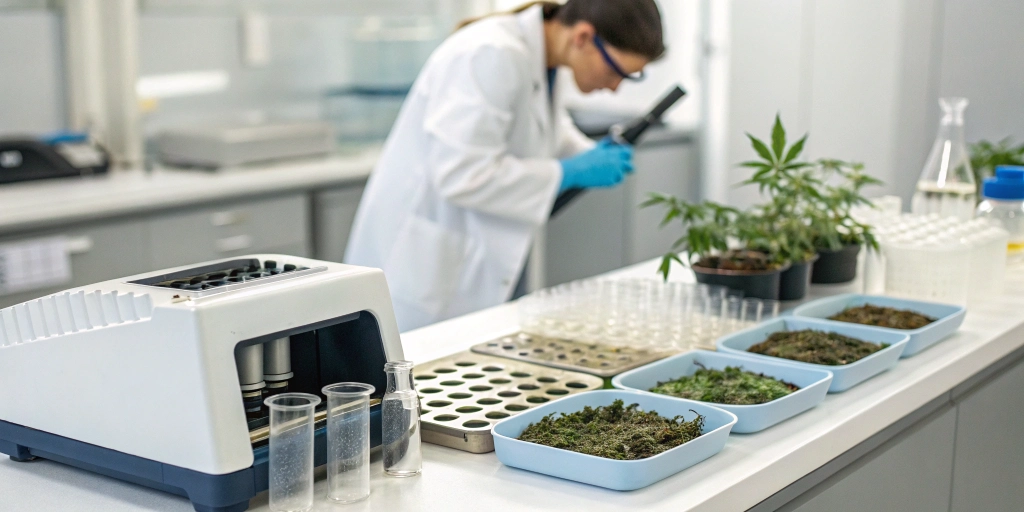
Advantages of Female Seeds
Flower Production and Potency
Female seeds guarantee flowering without the need for early sex identification. Growers can focus all resources on bud development once flowering begins. That certainty supports tight scheduling under artificial lights. Female plants develop more resin glands, boosting THC and CBD content per bud.
Moreover, consistent XX genetics yield reliable cannabinoid profiles across multiple grow cycles. This repeatability matters for medical users who need precise dosing. Growers also find that female-only crops simplify trimming and curing processes. That streamlined workflow enhances final flower quality and market value.
Resource Efficiency in Grow Cycles
Using female seeds exclusively reduces waste from unwanted male plants. Growers avoid spending nutrients, water, and light on non-productive males. This efficiency lowers overall cultivation costs. Harvest cycles also shorten since removal of males occurs only once rather than multiple culls.
Additionally, female plants absorb more CO₂ and nutrients during bloom without diverting energy to pollen synthesis. That focused resource use translates into higher resin production. Growers reuse environmental controls more effectively when all plants follow the same development timeline. The result is a smoother, more predictable operation.
Suitability for Medicinal Use
Female plants produce buds rich in therapeutic cannabinoids and terpenes. Patients often seek these compounds for pain relief, anxiety reduction, or inflammation control. Female genetics consistently yield the required profiles when grown under stable conditions. That consistency supports standardized dosing.
Furthermore, female strains adapt well to controlled environments like indoor grow tents and greenhouse. Growers fine-tune light spectra, humidity, and nutrients to optimize medicinal quality. The absence of male pollen ensures buds remain seedless and potent. As a result, cultivators can deliver high-grade medicine to dispensaries with confidence.
Advantages of Male Seeds
Pollination Control
Male seeds supply pollen for deliberate fertilization. Growers isolate male plants within pollen tents or separate rooms. That control prevents unwanted fertilization in the main canopy. Cultivators can plan cross-pollination events with precision. As a result, they create seeds only when desired.
Moreover, pollen storage allows staggered breeding schedules. Growers collect and freeze pollen from top-performing males. They thaw it later for specific crosses. This method extends the breeding window beyond a single flowering cycle. It also reduces logistical constraints on parent plant timing.
Breeding Potential
Male plants exhibit unique traits that breeders aim to capture. Some males show exceptional vigor or higher terpene production. Others resist mold or tolerate drought. By saving pollen from these individuals, breeders can combine those strengths with top female genetics. The result yields robust new hybrids.
Experienced breeders also perform pedigree analysis. They record male lineage alongside female performance data. That information guides future crosses and identifies valuable alleles. Over multiple generations, this systematic approach refines cultivars and boosts overall crop quality.
Enhancing Future Strains
Introducing fresh male genetics prevents inbreeding depression. Growers scout regional and international male lines for distinct characteristics. They cross these with established female strains to inject novelty. That practice generates unexpected phenotypes and expands market offerings.
Furthermore, male seeds enable seed-to-seed breeding strategies. Growers skip the clone phase by sowing seeds collected from specific crosses. This cycle accelerates breeding timelines without compromising genetic integrity. Ultimately, male seeds drive innovation and shape the cannabis landscape.
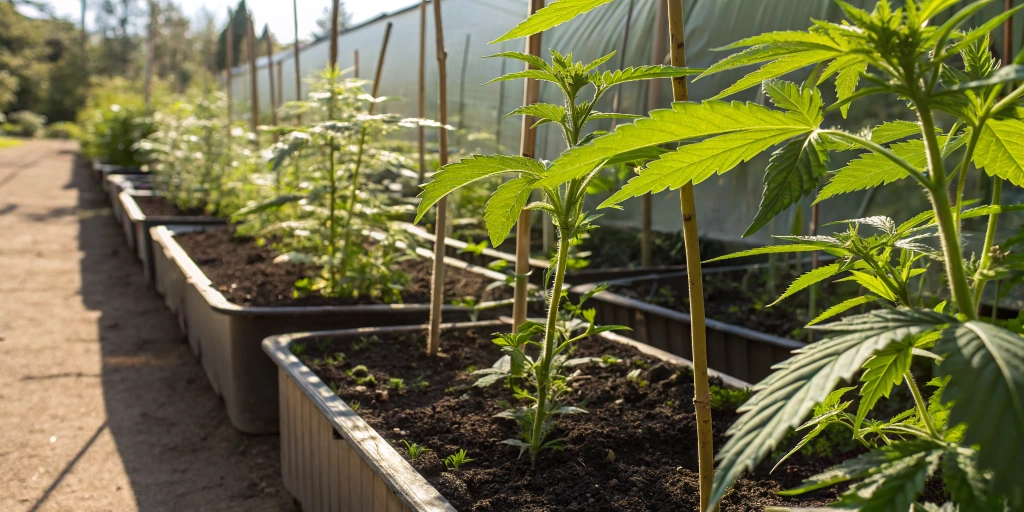
FAQs about male vs female cannabis seeds
How can I determine seed gender before planting?
Visual inspection and germination patterns provide early clues. Growers note seed color, shape, and sprout speed. Dark, glossy seeds often indicate females while lighter seeds suggest males. Germination tests may reveal rapid male sprouting. For certainty, small sprout samples go to PCR labs. That DNA test identifies Y-linked markers before full planting.
Do male seeds ever produce usable flowers?
Male plants produce pollen sacks rather than resinous buds. Those sacks lack the trichome density found on female flowers. As a result, male flowers rarely serve recreational or medicinal purposes. However, researchers extract cannabinoids from male biomass for specific studies. Generally, growers focus on females when targeting potent, usable flowers.
Which seed type works best for outdoor growing?
Outdoor cultivators often mix both seed types when planning breeding. For pure bud production, female seeds dominate outdoor gardens. They deliver high yields under natural light cycles. Male seeds serve breeding needs or controlled pollination tents. Gardeners prune and train female plants to maximize sun exposure and airflow outdoors.


